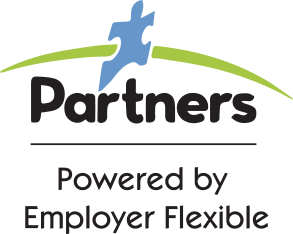Keeping the Door Open: Consider Former Employees to Tackle Worker Shortage
Keeping the Door Open: Consider Former Employees to Tackle Worker Shortage

The Great Resignation, far from abating, hit historic levels in March as a record 4.5 Americans quit their job while employers posted a record 11.5 million job openings.
“A gap between the number of job openings and of people unemployed but seeking work has persisted since last spring. In February, there were 1.79 job openings for every unemployed person, according to Labor Department data,” reported the Wall Street Journal.
Employers in this tight labor market need to look at all avenues to meet this worker shortage including leaving the door open for former employees to return to their positions.
Record Numbers: 11.5 Job Openings, 4.53 Workers Quit
The March 11.5 million job openings was higher than the previous record of 11.4 million in December 2021. The 4.53 million workers who quit their jobs in March topped the 4.51 million who quit in November 2021.
“Employers have had difficulty hiring from the limited pool of available workers, and millions of employees are expected to remain on the sideline indefinitely. Many people in the labor market also are finding they have gained leverage, making it easier to switch jobs,” reported the Wall Street Journal.
CNBC reported that employment openings exceeded the level of available workers by a staggering 5.6 million in March.
“Supply failed to keep up with demand in March, with the level of new hires actually declining slightly to 6.74 million depside the increase in openings,” reported CNBC.
The Great Regret: Unhappy Job Switchers Boomerang
Switching jobs, however, can be easier than being happy in their new jobs with a trend towards a “Great Regret” as workers rue their decisions to leave their previous employers.
“Recruiters who work with white-collar workers say many who jumped to new positions during the past year’s rush of job-changing have found that the roles are a poor fit, or the frustrations of their previous jobs exist in the new ones too,” reported the Wall Street Journal.
As often is the case when you find that the grass isn’t always greener on the other side, some employees look to return to familiar pastures with a larger number of Americans returning to previous employers.
“So-called boomerangs accounted for 4.5 percent of all new hires among companies on LinkedIn in 2021, according to the professional networking site, up from 3.9 percent in 2019,” reported the Wall Street Journal.
Putting out the Welcome (Back) Sign for Former Employees
The Muse CEO Kathryn Minshew writing in Bloomberg says that three out of four people say a new role has left them unpleasantly surprised.
“According to a new survey of more than 2,500 respondents from career site The Muse, which I founded, 72 percent of American workers said they too have experienced starting a new job and realizing — to their surprise or regret — that the position or company was very different from what they were led to believe,” wrote Minshew.
Almost half of those surveyed, some 80 percent surveyed, said it was okay to quit this new job before six months, and some are looking towards their former employers.
“If you truly liked your old one and regret leaving, consider asking your former boss about returning to the company — many companies are thrilled to welcome former employees back,” wrote Minshew.
Bernard Coleman writing in Inc. says it makes sense for employers to embrace these former employees.
“Everyone knows there's a war for talent, and recruiters everywhere are scrambling to find new talent. Recruiters needn't look too far--they should look at former employees,” writes Coleman. “It doesn't hurt to point out to former employees what they left behind by reminding them of how wonderful the experience was and is.”
Boomerang Employees Important Part of Talent Pipeline
The Society for Human Resource Management and Harvard Business Review say that returning employees, so-called boomerang employees, are a vital part of the talent pipeline.
“This is particularly true in times when there are talent shortages, as well as in sectors experiencing a surge in demand driving a shortfall of available talent, such as health care,” writes executive coach and founding partner at Next Step Partners Rebecca Zucker.
Zucker recommends the following strategies to create a pathway for employees to return:
- Destigmatize and Normalize Leaving the Organization: This could also be called “do not burn your bridges!” Employees leaving should be considered a betrayal to the organization but a normal part of employee career progression.
- Provide a Great Employee Experience: The better the experience the employee has with your company, the more likely they will consider a return.
- Create a Good Off-Boarding Experience: A lot of attention is paid to onboarding, but positive off-boarding can leave the door open for a return.
- Be Explicit That the Door is Open: Be supportive of employee’s decisions to leave while letting them know explicitly that they are welcome back should their career needs change.
- Build a Robust Alumni Program that Adds Value: Your alumni program is a great networking avenue for former employees and a means to keep them posted on company updates.
- Stay in Touch: Do not let employees walk out the door without getting contact information for future communications.
- Stay Organized: Keep track of alumni via an applicant tracking system.
- Stay Flexible: Some employees may be open to coming back to your organization for part-time or per-diem roles vs. full-time work.
“The grass is often not greener, and former talent might just need a nudge to consider coming back,” wrote Coleman, who had a Great Regret moment in his career with a negative six-month experience before his former employer nudged him to return. “I did after my Great Regret moment, and, thankfully, after those chaotic six months, I was able to boomerang back to my former company, returning to my team and a new role. Moreover, I came back with more loyalty and appreciation.”
Partners can help your organization with onboarding, off-boarding, and everything HR in between.



